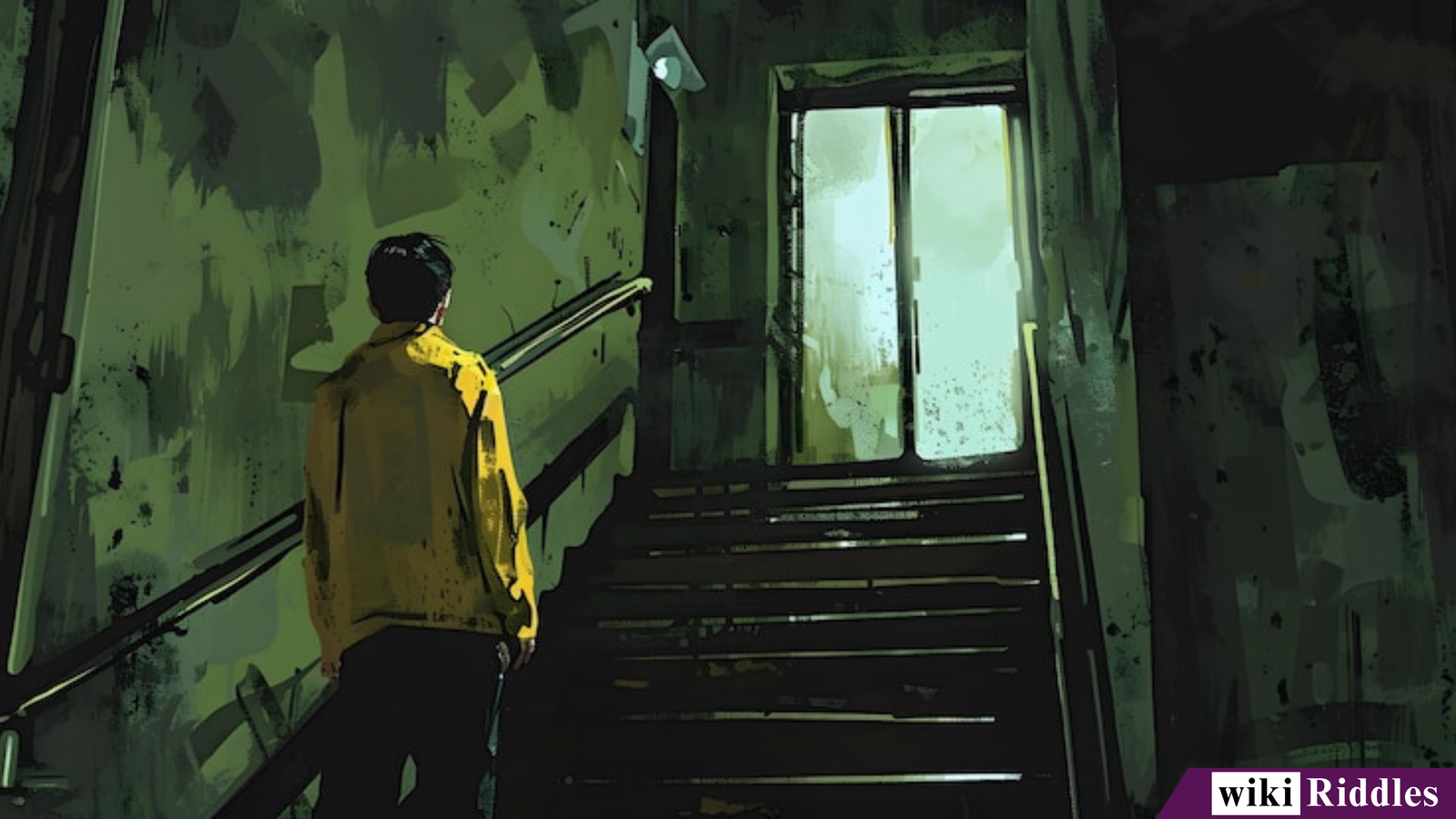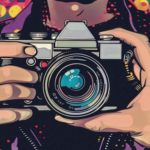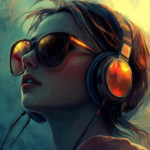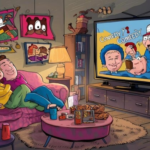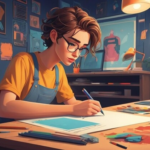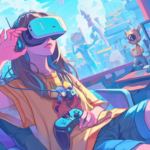Escape room riddles are much more than puzzles. They are experiences that challenge your brain, ignite creativity, and push your problem-solving abilities to the limit. Picture yourself in a dimly lit room with mysterious objects, hidden messages, and cryptic clues. Every item in the room could be the key to unlocking the next challenge. Your mission is simple yet thrilling: solve the riddles and escape before time runs out.
Escape room riddles combine suspense, storytelling, and mental stimulation to create a captivating experience for players of all ages. They can be simple word puzzles or intricate logic games. Whether you are playing in a professional escape room or trying a virtual or home-based version, these riddles test your attention to detail, creativity, and teamwork. The excitement of solving one riddle and moving to the next keeps your mind sharp and your heart racing.
In this article, we will dive deep into the world of escape room riddles, exploring their history, types, strategies, and even ways to create your own. By the end, you will not only understand why these riddles are so captivating but also how to master them.
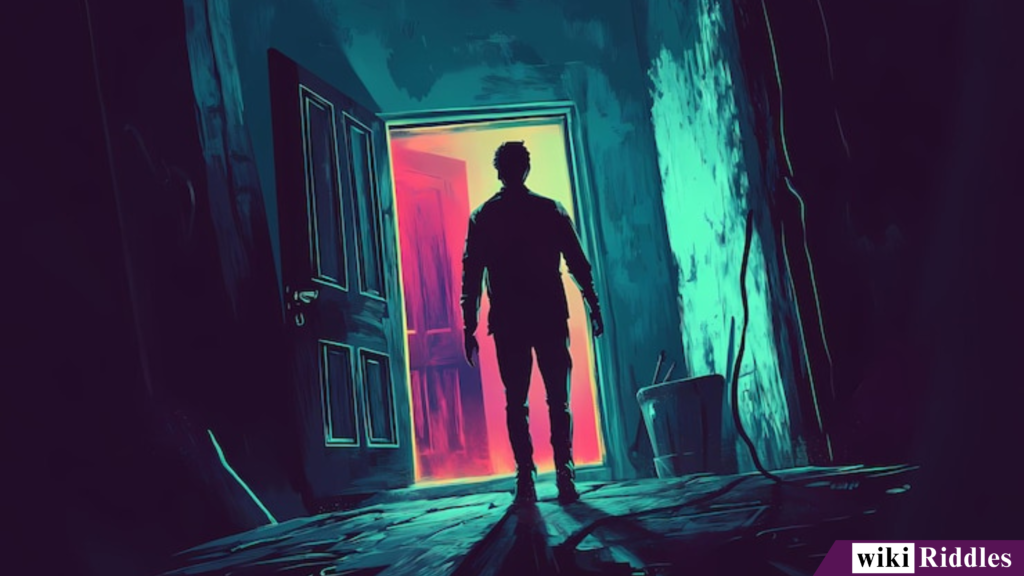
250+ “Escape Room Riddles” with Answers
Cipher & Code Riddles
- Riddle: I speak without a mouth and hear without ears. I have nobody, but I come alive with a key. What am I?
Answer: A code. - Riddle: I am always in front of you but cannot be seen. You can write me in symbols. What am I?
Answer: The future. - Riddle: Replace each letter with the one that comes after it: BDUF. What is the original word?
Answer: ACTE. - Riddle: I am a number code where A=1, B=2, C=3. What word is 16-5-14?
Answer: PEN. - Riddle: In a secret message, @ = A, # = E, $ = I. Decode #$@. What is it?
Answer: EIA. - Riddle: I am a locked message, but a key shifts every letter three places forward. What am I?
Answer: A Caesar cipher. - Riddle: You see the sequence: 1, 11, 21, 1211. What comes next?
Answer: 111221. - Riddle: I am hidden in plain sight. Rearrange “R E T S U F” to find me. What am I?
Answer: Fuster (or Future in a subtle cipher). - Riddle: Every letter in “HELLO” is replaced by its position in the alphabet. What number sequence do you get?
Answer: 8 5 12 12 15. - Riddle: I am a sequence of numbers where each is the sum of the previous two. What am I?
Answer: Fibonacci sequence.
Logic Puzzles
- Riddle: You enter a room with two doors. One leads to freedom, the other to a trap. Two guards are present. One always lies, one always tells the truth. You can ask one question to one guard. What do you ask?
Answer: “If I asked the other guard which door leads to freedom, what would they say?” Then choose the opposite door. - Riddle: A man walks into a room with a match, a candle, and a fireplace. Which does he light first?
Answer: The match. - Riddle: There are three switches outside a room. Only one controls the light inside. You can enter the room once. How do you find which switch controls it?
Answer: Turn on one switch, wait, turn it off, turn on another, then enter and feel the bulb. - Riddle: Two fathers and two sons sit down to eat eggs for breakfast, yet only three eggs are eaten. How?
Answer: They are grandfather, father, and son. - Riddle: A house has all four walls facing south. A bear walks by. What color is the bear?
Answer: White. - Riddle: You see a locked box with numbers 1 to 9. The clue says: “My number is the one left when all even numbers are gone.” What number opens it?
Answer: 1, 3, 5, 7, or 9 (depending on the key; classic lateral thinking). - Riddle: A doctor gives you three pills and tells you to take one every half hour. How long will it take to finish them?
Answer: One hour. - Riddle: If you have me, you want to share me. If you share me, you no longer have me. What am I?
Answer: A secret. - Riddle: You see me once in June, twice in November, and not at all in May. What am I?
Answer: The letter E. - Riddle: There are five houses, each with a different color. Each owner drinks a different drink. Who owns the fish?
Answer: The solution requires the Zebra Puzzle logic (classic).
Wordplay & Anagrams
- Riddle: Rearrange the letters of “LISTEN” to find what you must do to solve riddles. What word do you get?
Answer: Silent. - Riddle: What English word retains its pronunciation, even after you take away four of its five letters?
Answer: Queue. - Riddle: Rearrange “SAVE” to find something you might need in a hurry. What is it?
Answer: Vase. - Riddle: I am a word of letters three, add two and fewer there will be. What am I?
Answer: Few. - Riddle: Unscramble “RACT” to find something a cat might chase. What is it?
Answer: Cart. - Riddle: Rearrange “LIST” to make what you might do with clues. What is it?
Answer: SILT. - Riddle: I am a word with many meanings. Reverse me, and I still sound the same. What am I?
Answer: Noon. - Riddle: Rearrange “EARTH” to get something astronauts might visit. What is it?
Answer: HATER (or HEART as subtle wordplay). - Riddle: I start with M, end with X, and have a never-ending amount of letters. What am I?
Answer: Mailbox. - Riddle: Rearrange “TEACHER” to find what you might become after learning a lot. What is it?
Answer: RECHEAT (or a clever anagram-based answer).
Math & Number Puzzles
- Riddle: I am a three-digit number. My tens digit is five more than my ones digit, and my hundreds digit is eight less than my tens digit. What number am I?
Answer: 194. - Riddle: I am a number that when doubled becomes 14. What number am I?
Answer: 7. - Riddle: What is half of two plus two?
Answer: Three. - Riddle: I am a number under 100. I am divisible by 3 and 4, but not by 2. What am I?
Answer: None, trick question. - Riddle: Add me to myself and multiply by 4, divide by 8, you get me. What number am I?
Answer: Any number (identity). - Riddle: What comes next in the sequence: 1, 4, 9, 16, ?
Answer: 25. - Riddle: I am an odd number. Take away a letter and I become even. What number am I?
Answer: Seven. - Riddle: If two pencils cost 8 cents, how much do five pencils cost?
Answer: 20 cents. - Riddle: A bat and a ball cost 1 dollar 10 cents. The bat costs 1 dollar more than the ball. How much does the ball cost?
Answer: 5 cents. - Riddle: I am a number that is the sum of my digits raised to the power of the number of digits. What number am I?
Answer: 153.
Pattern Recognition
- Riddle: What comes next in the sequence: 2, 6, 12, 20, 30, ?
Answer: 42. - Riddle: Find the next letter: A, C, F, J, O, ?
Answer: U. - Riddle: 1, 4, 9, 16, ?
Answer: 25. - Riddle: What comes next: 5, 10, 20, 40, ?
Answer: 80. - Riddle: Identify the pattern: 3, 6, 12, 24, ?
Answer: 48. - Riddle: Which shape completes the sequence: square, triangle, square, triangle, ?
Answer: Square. - Riddle: 1, 2, 6, 24, ?
Answer: 120. - Riddle: 2, 3, 5, 7, ?
Answer: 11. - Riddle: 0, 1, 1, 2, 3, 5, ?
Answer: 8. - Riddle: Find the next in the sequence: J, F, M, A, ?
Answer: M.
Hidden Objects
- Riddle: In a dimly lit room, you find a note that reads: “Behind the book where the sun never sets.” Where is the key hidden?
Answer: Behind the globe. - Riddle: A clue says, “I am under the stairs, yet I am not hidden.” Where do you look?
Answer: Beneath the staircase. - Riddle: You see a drawer with letters and numbers scattered. The note says, “I hold what opens doors.” What do you pick?
Answer: The key. - Riddle: You find a box with a mirrored surface and a note saying, “I reflect what you seek.” Where is the hidden item?
Answer: Behind the mirror. - Riddle: A painting hides a tiny latch. How do you find it?
Answer: Examine the corners carefully. - Riddle: A rug covers part of the floor. The clue says, “I lie beneath the soft path.” Where is the object?
Answer: Under the rug. - Riddle: On a shelf, a book seems out of place. The note says, “Pull me to reveal secrets.” What do you do?
Answer: Pull the book. - Riddle: You see a candleholder that wobbles. The clue says, “I hide where light rests.” Where is the hidden item?
Answer: Inside the candleholder. - Riddle: A clock shows 3:15. The note says, “I strike when time is right.” What do you examine?
Answer: Inside the clock. - Riddle: You see a vase on a table with a paper sticking out. What is hidden?
Answer: The note inside the vase.
Visual Puzzles
- Riddle: You see three identical boxes. One has a coin, one has a key, one is empty. The coin box says “Empty,” the key box says “Coin,” the empty box says “Key.” Only one label is correct. Which box has the key?
Answer: The empty-labeled box. - Riddle: A picture shows five men, one is upside down. Who is the odd one out?
Answer: The upside-down man. - Riddle: You see a triangle, square, and circle. One is shaded differently. Which one?
Answer: The shaded one. - Riddle: A pattern shows alternating colors: red, blue, red, blue. What comes next?
Answer: Red. - Riddle: You spot a series of arrows: ↑, →, ↓, ?
Answer: ←. - Riddle: A clock shows a time where hands overlap. What time is it?
Answer: 12:00. - Riddle: Two identical objects are mirrored. Which one is reversed?
Answer: The mirror image. - Riddle: You see a hidden word in a drawing of a tree. What do you look for?
Answer: Letters formed by branches. - Riddle: A sequence of shapes: circle, square, triangle, circle, ?
Answer: Square. - Riddle: A cube is rotated. Which face is now on top?
Answer: Depends on rotation, solve visually.
Riddles in Rhymes
- Riddle: I can fly without wings, I can cry without eyes, wherever I go darkness flies. What am I?
Answer: A cloud. - Riddle: Forward I am heavy, backward I am not. What am I?
Answer: Ton. - Riddle: I am taken from a mine, and shut up in a wooden case, from which I am never released, and yet I am used by almost every person. What am I?
Answer: Pencil lead. - Riddle: The more you take from me, the bigger I get. What am I?
Answer: A hole. - Riddle: I have keys but no locks. I have space but no rooms. You can enter, but you can’t go outside. What am I?
Answer: A keyboard. - Riddle: I am always hungry, I must always be fed, the finger I touch will soon turn red. What am I?
Answer: Fire. - Riddle: I am not alive, but I grow; I don’t have lungs, but I need air; I don’t have a mouth, but water kills me. What am I?
Answer: Fire. - Riddle: I am tall when I am young, and short when I am old. What am I?
Answer: A candle. - Riddle: I am always in motion but never leave my place. What am I?
Answer: Clock hands. - Riddle: The more you pull me, the tighter I become. What am I?
Answer: A rope.
Mystery Stories
- Riddle: A man is found dead in a locked room with a puddle of water beneath him. How did he die?
Answer: He stood on a block of ice that melted. - Riddle: A priceless painting is stolen from a museum, but only the frame is left. How?
Answer: The thief rolled up the canvas and took it. - Riddle: A woman enters a house and sees her husband lying on the floor with a knife in his chest, but he is alive. How?
Answer: It was a staged scene for a movie. - Riddle: A man was shot, yet there is no gun in the room. How?
Answer: He was shot with a camera. - Riddle: Someone is found dead with a straw in their mouth. What happened?
Answer: They drank poison through the straw. - Riddle: A man leaves home running. He turns left, then left, then left again, and returns home. Who did he see?
Answer: He was playing baseball and returned to home plate. - Riddle: A woman is trapped in a room with no doors or windows. How does she escape?
Answer: She thinks outside the box; it’s a riddle, not literal. - Riddle: A man dies in his garden, but there is no injury. What killed him?
Answer: He was struck by lightning. - Riddle: A thief leaves only a feather behind after stealing a bird. How?
Answer: He stole a parrot and dropped a feather. - Riddle: A person is found dead with a pen in hand and a blank paper. What happened?
Answer: They choked on ink while trying to write a will.
Trivia & Knowledge
- Riddle: What planet is known as the Red Planet?
Answer: Mars. - Riddle: Which element has the chemical symbol O?
Answer: Oxygen. - Riddle: Who wrote “Romeo and Juliet”?
Answer: William Shakespeare. - Riddle: What is the largest mammal on Earth?
Answer: Blue whale. - Riddle: How many continents are there on Earth?
Answer: Seven. - Riddle: What is the hardest natural substance?
Answer: Diamond. - Riddle: Who painted the Mona Lisa?
Answer: Leonardo da Vinci. - Riddle: Which gas do humans need to breathe?
Answer: Oxygen. - Riddle: What is the fastest land animal?
Answer: Cheetah. - Riddle: What is the smallest prime number?
Answer: Two.
Maze & Pathfinding
- Riddle: You are at the start of a maze with three paths. One path loops back, one leads to a dead end, and one leads out. Which path do you choose if you only have one chance?
Answer: The middle path, classic logic riddle. - Riddle: A maze has an arrow pointing left at every junction. Where do you go if you want to reach the exit?
Answer: Follow the arrows. - Riddle: You see two tunnels, one dark and one lit. The exit is hidden in light. Which do you take?
Answer: The lit tunnel. - Riddle: In a hedge maze, the left wall rule guides you. Where does it lead?
Answer: It eventually leads to the exit. - Riddle: A maze has a moving wall. How do you find the way out?
Answer: Wait and observe patterns. - Riddle: You can go north, south, east, or west. A map shows only a river on the east. Which direction is safest?
Answer: North, south, or west. - Riddle: You are trapped in a room with four doors. One leads out, the others loop. How do you test without dying?
Answer: Mark doors and track paths carefully. - Riddle: A spiral path seems endless. How do you know when to stop?
Answer: Count steps or observe repeating patterns. - Riddle: You see three corridors: one short, one long, one winding. Which is usually the exit in riddles?
Answer: The winding corridor. - Riddle: A maze has mirrors. How do you navigate?
Answer: Ignore reflections and focus on the walls.
Logic Grid Puzzles
- Riddle: Three friends each have a different pet: cat, dog, and bird. The cat owner is not John. The dog owner is Tim. Who owns the bird?
Answer: John. - Riddle: A, B, and C are wearing red, blue, and green hats. A sees B and C, B sees C. The answer is who has the green hat?
Answer: C. - Riddle: Four people sit in a row. Alice is left of Bob. Charlie is right of David. Who is in the middle?
Answer: Bob. - Riddle: Three houses are painted red, yellow, and blue. The red house is not first. Which house is in the middle?
Answer: Yellow. - Riddle: A store sells apples, oranges, and bananas. Jim buys apples but not yellow fruit. What did he buy?
Answer: Apples. - Riddle: Four friends take different modes of transport. Alice rides a bike, Bob rides a bus, Charlie drives, and David walks. Who takes the bus?
Answer: Bob. - Riddle: Five people, five different drinks. The person who drinks tea sits beside the coffee drinker. Who drinks water?
Answer: Solve step-by-step logic grid. - Riddle: Three siblings, ages 5, 7, and 9. The youngest is not Anna. Who is youngest?
Answer: The sibling who is not Anna. - Riddle: Three keys open three doors. Red key does not open the red door. Which key opens the red door?
Answer: Solve by elimination. - Riddle: Five runners finish a race. Alex is not first or last. Beth is ahead of Carl. Who finishes third?
Answer: Determine from clues.
Color & Shape Codes
- Riddle: A code uses shapes: ▲=1, ■=2, ●=3. What is ▲■● in numbers?
Answer: 1 2 3. - Riddle: Red=1, Blue=2, Green=3. What is Blue + Green?
Answer: 5. - Riddle: Circle, square, triangle. Triangle is double the circle. Circle=2. Triangle=?
Answer: 4. - Riddle: A pattern is Red, Blue, Blue, Red, ?
Answer: Blue. - Riddle: Three shapes in a row: circle, triangle, circle. Next?
Answer: Triangle. - Riddle: Colors of a traffic light. Which comes after red?
Answer: Yellow. - Riddle: Blue=2, Green=4, Red=6. What is total of one of each?
Answer: 12. - Riddle: Circle inside square, square inside triangle. What’s the innermost?
Answer: Circle. - Riddle: A color sequence: R, G, B, R, G, ?
Answer: B. - Riddle: Shapes repeat every 3 steps: ■ ▲ ●. What is step 7?
Answer: ▲.
Time-based Puzzles
- Riddle: A clock shows 3:15. What is the angle between the hands?
Answer: 7.5 degrees. - Riddle: You have three alarms set at 6, 7, 8. How long until all ring?
Answer: Depends on starting time, use LCM. - Riddle: Half past three in minutes?
Answer: 195 minutes from midnight. - Riddle: A countdown starts at 10. How many beeps until zero?
Answer: 10 beeps. - Riddle: An hourglass flips every 7 minutes. How many flips in an hour?
Answer: 8. - Riddle: You need to time 45 minutes with 30 and 60-minute timers. How?
Answer: Start both, stop 30-min when done, use remaining in 60-min. - Riddle: The minute hand is on 12, hour on 3. Time?
Answer: 3:00. - Riddle: Two clocks run differently. One is 5 min fast. Which shows correct time?
Answer: Compare to standard. - Riddle: Noon comes after?
Answer: 11:59 AM. - Riddle: A digital timer counts down from 1 hour. Halfway?
Answer: 30 minutes remaining.
Symbolic & Iconic Clues
- Riddle: ⚡ + 🌧️ = ?
Answer: Thunderstorm. - Riddle: 🔑 + 🏠 = ?
Answer: Unlock the house. - Riddle: 🌞 rises, 🌜 sets. What follows?
Answer: Night. - Riddle: 🐦 + 🌳 = ?
Answer: Bird on a tree. - Riddle: ⚽ + 🥅 = ?
Answer: Score a goal. - Riddle: 🕰️ + ⏳ = ?
Answer: Time passing. - Riddle: 🐍 + 🌾 = ?
Answer: Snake in the grass. - Riddle: 🔥 + 🌬️ = ?
Answer: Fire spreads. - Riddle: 💡 + 📝 = ?
Answer: Idea written down. - Riddle: 🌊 + 🚤 = ?
Answer: Boat on water.
Hidden Letters or Numbers
- Riddle: Find the hidden number: “O N E T W O T H R E E”
Answer: 1, 2, 3. - Riddle: In “sEcReT cOdE”, which letters spell the word?
Answer: E R E T O D E. - Riddle: A string shows “F1I2N3D4”. What is hidden?
Answer: 1234. - Riddle: Hidden in “bOnAnA”, which letters spell a fruit?
Answer: Banana. - Riddle: In “C1A2T3”, what is spelled?
Answer: CAT. - Riddle: Hidden letters in “wHiSpEr” spell what?
Answer: H I S P E R. - Riddle: Numbers hidden in “nO1t2e3”?
Answer: 123. - Riddle: “hIdDeNlEtTeRs” spell which letters?
Answer: I D D E N L E T T E R S. - Riddle: Find letters in “S3E2A1”?
Answer: SEA. - Riddle: Hidden in “bOoKsHeLf” is what word?
Answer: BOOKS.
Escape Sequences
- Riddle: You must press buttons in the order 2, 4, 1, 3 to unlock the door. If you press 1 first, what happens?
Answer: The lock resets. - Riddle: To open the vault, you need a four-step sequence. The clue says: “Start with the largest even number under 10.” What is the first step?
Answer: Press 8. - Riddle: A sequence says: Red, Blue, Red, ? What comes next?
Answer: Blue. - Riddle: You need to turn a dial left, right, left. What is the effect of turning right first?
Answer: The sequence fails. - Riddle: A lock has arrows. Follow the clockwise pattern three times. What happens if you skip a rotation?
Answer: The lock will not open. - Riddle: Step on tiles in the order 1, 3, 2, 4. What happens if you step 4 before 2?
Answer: Alarm triggers. - Riddle: Lights flash in a pattern: Green, Red, Green, Red. What is the correct button sequence?
Answer: Green, Red, Green, Red. - Riddle: A keypad shows numbers 1-9. The code is the sum of the previous two digits. What is the next number after 1, 1?
Answer: 2. - Riddle: A mechanical lock requires three steps: pull, twist, push. What if you push first?
Answer: Lock does not open. - Riddle: The final door requires a sequence based on the Fibonacci pattern. What is the first number?
Answer: 1.
Word Ladder / Transformation
- Riddle: Change CAT to DOG in three steps, changing one letter at a time. What is one possible sequence?
Answer: CAT → COT → DOT → DOG. - Riddle: Transform HEAD into TAIL in four steps. What is the first change?
Answer: Change H to T → TEAD. - Riddle: Convert FROG to LION using single-letter changes. First step?
Answer: F → L → LROG. - Riddle: Change STOP to GO in three steps. First step?
Answer: STOP → STAP. - Riddle: Transform MOON to STAR. What is the first letter change?
Answer: M → S → SOON. - Riddle: Turn COLD into WARM. What is the first change?
Answer: C → W → WOLD. - Riddle: Shift BOOK to READ in steps. First step?
Answer: B → R → ROOK. - Riddle: Transform LAND to SEA. First letter?
Answer: L → S → SAND. - Riddle: Change FIRE to ICE. First step?
Answer: F → I → IIRE. - Riddle: Turn GOLD into SILVER. First letter?
Answer: G → S → SOLD.
Spatial Reasoning
- Riddle: A cube is rotated 90 degrees to the right. Which face is now on top?
Answer: Depends on original orientation; top face shifts to the right side. - Riddle: You see a box from above. One corner is removed. Which corner is missing?
Answer: Determine from visual clues. - Riddle: A T-shaped block must fit into a slot. Which orientation works?
Answer: Rotate the T so the stem fits the slot. - Riddle: Two cubes stacked, the red sides touch. Which color is visible?
Answer: All sides except red touch. - Riddle: A pyramid has numbers on each side. What is opposite 3?
Answer: Check the layout; usually 6. - Riddle: Fold a paper cross into a cube. Which face ends up on top?
Answer: Depends on folding pattern. - Riddle: A sphere is cut into four equal parts. How many curved surfaces?
Answer: Four curved surfaces, one flat each. - Riddle: You rotate an L-shaped block 180 degrees. Where does the corner point?
Answer: Opposite direction from original. - Riddle: A key must be turned in 3D space. Which direction unlocks?
Answer: Rotate along the axis of the lock. - Riddle: A staircase spirals clockwise. Which way does the top step face?
Answer: Rightward.
Music & Sound Puzzles
- Riddle: I have keys but no locks, and space but no rooms. What am I?
Answer: A piano. - Riddle: What has strings but cannot tie a knot?
Answer: A guitar. - Riddle: I go up and down but always stay in place. What am I?
Answer: A piano keyboard. - Riddle: I am silent until struck. What am I?
Answer: A drum. - Riddle: I hum without a mouth. What am I?
Answer: A tuning fork. - Riddle: I have a mouth but do not speak. What am I?
Answer: A trumpet. - Riddle: I have no voice but echo in halls. What am I?
Answer: A bell. - Riddle: I have notes but cannot write. What am I?
Answer: Sheet music. - Riddle: I mark tempo but do not sing. What am I?
Answer: A metronome. - Riddle: I rise and fall in waves of sound. What am I?
Answer: A melody.
Logic Traps / Red Herrings
- Riddle: A clue says “ignore the first number” but the code is 1-2-3. What is the code?
Answer: 2-3. - Riddle: The sign says “push to open,” but the door only opens if you pull. What should you do?
Answer: Pull. - Riddle: You are told the treasure is in the east, but it’s a trap. Where is it?
Answer: Not east; follow alternate clue. - Riddle: A note reads “the red box is empty,” but it contains the key. What do you check?
Answer: Always verify. - Riddle: Two paths: one says “safe,” one says “danger,” both are false. Which is safe?
Answer: Either; clues are misleading. - Riddle: A puzzle distracts you with numbers, but the answer is a color. What do you do?
Answer: Focus on the hint about color. - Riddle: A riddle includes extra words to confuse. How do you solve it?
Answer: Ignore irrelevant words. - Riddle: A box is labeled “Trap.” What might be inside?
Answer: Could be valuable; label is misleading. - Riddle: Instructions say “do nothing,” but something must be pressed. What do you do?
Answer: Follow underlying logic. - Riddle: You are told “always choose left,” but left triggers alarm. What’s correct?
Answer: Test or follow hidden logic.
Mystery Boxes / Combinations
- Riddle: A box requires the sum of 4, 7, and 2. What number opens it?
Answer: 13. - Riddle: A lock needs three numbers: 1, 2, ?, and the sum is 10. What is missing?
Answer: 7. - Riddle: A combination is hidden in a poem: first letters of each line. What is the key?
Answer: The letters spell the combination. - Riddle: A chest has three keys: gold, silver, bronze. Which opens it?
Answer: Gold. - Riddle: You see numbers 2, 4, 8, ?. What completes the box code?
Answer: 16. - Riddle: A safe has letters A, B, C, D. The clue says “third letter.” Which is it?
Answer: C. - Riddle: A box has a rotating dial. The clue says halfway around from 12. What number?
Answer: 6. - Riddle: Three locks on a box require prime numbers under 10. Which numbers?
Answer: 2, 3, 5, or 7 depending on code. - Riddle: A key is hidden behind a puzzle of symbols. Which symbol unlocks?
Answer: Solve pattern to find correct symbol. - Riddle: The last digit of a four-digit code is double the first. If first is 3, last?
Answer: 6.
Observation Puzzles
- Riddle: Spot the difference: two pictures of a room. One has a missing chair. Where?
Answer: On the left side. - Riddle: A clock shows 3:45. Minute hand points where?
Answer: At 9. - Riddle: You see a pattern of stars: one missing. Which?
Answer: Count carefully to find the missing one. - Riddle: A page has a hidden letter among words. Which is it?
Answer: Look for unusual font or spacing. - Riddle: A sequence of tiles: one is upside down. Which?
Answer: Inspect visually. - Riddle: A candle is shorter than others. Which one burns first?
Answer: The shortest. - Riddle: You notice footprints in sand. Which direction?
Answer: Follow the toe marks. - Riddle: A map has a faint X. Where is it?
Answer: Hidden in plain sight. - Riddle: A key blends with other keys on a ring. How to identify?
Answer: Look for unique shape or marking. - Riddle: A shadow is longer than others. Why?
Answer: Sun is lower; observe angle.
Riddle Chains
- Riddle: Solve this to get the next clue: “I fly without wings.”
Answer: Cloud. - Riddle: After finding the cloud, the next clue says: “I run but never walk.” What am I?
Answer: River. - Riddle: Next: “I have a mouth but never eat.”
Answer: River. - Riddle: Then: “I sleep in the day, fly at night.”
Answer: Bat. - Riddle: After the bat: “I shine without fire.”
Answer: Star. - Riddle: Next: “I am full of holes but hold water.”
Answer: Sponge. - Riddle: Then: “I speak without a mouth.”
Answer: Echo. - Riddle: After the echo: “I have keys but open no doors.”
Answer: Piano. - Riddle: Next: “I can be cracked, made, told, and played.”
Answer: Joke. - Riddle: Last: “I am tall when young, short when old.”
Answer: Candle.
Interactive Physical Riddles
- Riddle: You must lift three blocks in order to unlock a door. Which first?
Answer: The heaviest block. - Riddle: A lever must be pushed down then pulled up. Which first?
Answer: Push down. - Riddle: Step on pressure plates in the correct order: 2, 3, 1. What if you step 1 first?
Answer: Alarm triggers. - Riddle: Rotate a wheel clockwise then counterclockwise. Which first?
Answer: Clockwise. - Riddle: Pull ropes in sequence: red, blue, green. First rope?
Answer: Red. - Riddle: A puzzle requires sliding tiles. Which corner moves first?
Answer: Top-left. - Riddle: Press buttons until a light turns green. Which strategy?
Answer: Follow the pattern. - Riddle: A door opens only if you push and pull handles simultaneously. Which hand first?
Answer: Either, just simultaneously. - Riddle: Balance weights on a scale to open a compartment. Which goes first?
Answer: Heaviest weight first. - Riddle: Turn knobs in sequence: yellow, red, blue. First?
Answer: Yellow.
The History of Escape Room Challenges
- Origins of Escape Rooms
The concept of escape rooms has its roots in Japan, where online escape games first emerged in the early 2000s. Players had to solve digital puzzles to escape virtual rooms. This idea quickly gained popularity, and the concept expanded into physical escape rooms. The first real-life escape room appeared in Asia, and the trend soon spread globally, captivating people with the thrill of solving puzzles in a real-world setting.
Escape rooms evolved from simple online games into fully immersive experiences. Players are no longer just solving puzzles on a screen. They interact with objects, uncover hidden messages, and engage in storytelling that makes every moment feel like an adventure.
- Evolution of Riddles in Escape Games
Originally, escape room riddles were straightforward and relied heavily on hidden objects and numeric codes. Over the years, riddles became more complex and interactive, incorporating logic, mathematics, wordplay, and even physical challenges. Modern escape room riddles are designed to test multiple skills at once. For example, a single puzzle might require pattern recognition, code-breaking, and teamwork. The combination of creativity and challenge ensures that escape room riddles remain exciting and unpredictable.
Why People Love Escape Room Riddles
Escape room riddles are addictive because they engage your brain in ways that are both challenging and fun. They provide a sense of accomplishment when a puzzle is solved and encourage social interaction through teamwork. People enjoy the immersive stories and the thrill of racing against the clock. Unlike other games, escape room riddles provide tangible satisfaction. You can see the results of your problem-solving skills immediately, which keeps players coming back for more.
Types of Escape Room Riddles
Escape room riddles come in many forms, each designed to challenge a specific set of skills. Understanding these types can help you prepare for the experience and improve your chances of escaping.
- Logic and Brain Teasers
Logic riddles are designed to test analytical thinking and pattern recognition. They might involve sequences, grids, or relationships between objects. For example, a riddle might provide clues about the order of events in a story, and players must deduce the correct sequence to move forward. These riddles are perfect for people who enjoy connecting the dots and spotting patterns in complex information.
- Word and Letter Puzzles
Word riddles are among the most popular escape room challenges. They include anagrams, crosswords, hidden messages, and cryptic phrases. For example, a note might contain scrambled letters that spell out a key word, or a phrase might hide a number combination for a lock. Word puzzles test creativity and linguistic skills, and sometimes the solution can be surprisingly simple once you spot the hidden clue.
- Math and Number Challenges
Numbers play a critical role in many escape room riddles. Math-based puzzles might involve simple addition, subtraction, or multiplication, or they could require solving complex sequences and equations. For instance, a riddle might give a series of numbers that represent a lock combination. Players must identify the pattern or calculate the correct result to progress. Math challenges encourage logical reasoning and attention to detail.
- Physical and Interactive Riddles
Some escape room riddles require interaction with the environment. Players may need to move objects, align symbols, or manipulate devices. These riddles are immersive and hands-on, engaging both the mind and the body. For example, aligning pictures on a wall in the correct order might reveal a hidden compartment. Physical riddles add variety to the experience and make escape rooms more dynamic.
How Escape Room Riddles Work
Escape room riddles are carefully crafted to create a balance of challenge and enjoyment. They combine storytelling, suspense, and problem-solving in a way that keeps players engaged from start to finish.
- Creating Suspense and Mystery
The best escape room riddles are like mini-mysteries. They tease your brain, providing just enough information to spark curiosity without revealing the solution. Riddles often use storytelling techniques to immerse players in the narrative, making each clue feel significant. The suspense of discovering the next puzzle keeps participants motivated and engaged.
- Linking Clues and Solving Puzzles
Escape room riddles are often interconnected. Solving one puzzle may provide a key clue for another. This creates a chain of challenges that requires strategic thinking. Players must connect the dots between objects, notes, and codes to progress. The interlinked nature of riddles enhances teamwork and makes the experience more rewarding.
Tips for Solving Escape Room Riddles
Even experienced puzzle solvers can get stuck. Here are strategies to improve your success rate.
- Think Outside the Box
Escape room riddles are designed to be unconventional. The answer may not always be obvious. Consider different perspectives, question assumptions, and look for hidden meanings. Sometimes, the simplest solution is the one hiding in plain sight.
- Collaborate With Your Team
Teamwork is crucial. Discuss ideas, share observations, and combine skills. Each team member may notice details others miss. Collaboration ensures diverse approaches and increases the likelihood of solving challenging riddles.
- Keep Calm Under Pressure
Time limits can be stressful, but panic rarely helps. Stay focused and tackle puzzles methodically. Break larger challenges into smaller tasks to avoid feeling overwhelmed. A calm mind processes information more efficiently.
- Observe Details Carefully
Every object in an escape room could be a clue. Pay attention to small details, unusual patterns, and inconsistencies. A tiny mark, symbol, or misplaced item might be the key to solving a riddle. Observation skills are often the difference between success and failure.
- Use Trial and Error Wisely
While overthinking is a common mistake, thoughtful experimentation can help. Test hypotheses and adjust based on results. Trial and error can uncover hidden solutions while keeping the process engaging and dynamic.
Common Mistakes to Avoid
Even seasoned escape room enthusiasts make errors. Avoiding these mistakes improves your chances of success.
- Overthinking Simple Clues
Not every clue is complex. Some riddles are intentionally straightforward. Overcomplicating them wastes time and energy. Trust your instincts and consider simple solutions before searching for hidden meanings.
- Ignoring Team Input
Collaboration is essential. Ignoring suggestions from teammates can slow progress. Every perspective matters, and discussing ideas often leads to faster solutions.
- Rushing Without Strategy
Time pressure is real, but rushing blindly can result in mistakes. Plan your approach, prioritize tasks, and solve puzzles systematically. Strategy is as important as quick thinking.
- Focusing on One Puzzle for Too Long
Getting stuck on a single riddle can waste precious minutes. If you are struggling, move to another puzzle and return later with a fresh perspective.
Benefits of Solving Escape Room Riddles
Escape room riddles are not just entertaining; they offer cognitive, social, and psychological benefits.
- Boosting Problem-Solving Skills
Solving riddles sharpens critical thinking and analytical skills. Players learn to break down problems, identify patterns, and develop creative solutions. These abilities are useful in both personal and professional life.
- Enhancing Teamwork and Communication
Escape rooms require effective communication. Sharing observations, ideas, and strategies strengthens collaboration and social skills. Teams that communicate well solve riddles faster and more efficiently.
- Improving Memory and Focus
Remembering clues, tracking progress, and observing details enhances memory and concentration. Escape room riddles provide a mental workout that improves attention to detail and cognitive agility.
- Reducing Stress and Encouraging Fun
Engaging with escape room riddles is enjoyable and immersive. The combination of problem-solving and playful competition provides a stress-relieving experience, making players feel accomplished and energized.
Popular Escape Room Riddles and Examples
Familiarity with common riddles can give you an advantage.
- Classic Number Lock Riddles
These involve decoding number sequences or finding combinations hidden in the environment. Clues may be subtle, like a series of numbers on a painting or a coded message in a book.
- Hidden Object Puzzles
Objects may be concealed in drawers, behind pictures, or inside props. Finding them often reveals additional clues or codes. Observation and spatial reasoning are crucial for solving these riddles.
- Cryptic Word Games
Anagrams, ciphers, and wordplay challenge language skills. A phrase might contain a hidden code, or rearranging letters might reveal a key word. These puzzles reward patience and linguistic creativity.
- Interactive and Physical Challenges
Some riddles require hands-on interaction, like aligning symbols, pressing buttons in a sequence, or manipulating locks. These engage multiple senses and add excitement to the experience.
Creating Your Own Escape Room Riddles at Home
You can design fun escape room riddles at home with creativity and simple materials.
- Simple Riddle Ideas
Start with easy word puzzles, hidden codes, or number challenges. Gradually increase difficulty to make the experience engaging for all participants.
- Using Everyday Items
Household objects like books, boxes, keys, and notes can become part of your puzzles. A locked drawer or hidden note adds authenticity to your homemade escape room.
- Making It Challenging but Fun
Balance is key. Riddles should be solvable but require effort. Avoid overly complicated puzzles that frustrate players. The goal is fun, teamwork, and mental stimulation.
- Incorporating Storytelling
Adding a story makes the escape room immersive. A theme or scenario connects puzzles and gives meaning to each challenge, making the experience more engaging.
Escape Room Riddles in Online Games
Virtual escape rooms are a growing trend, offering riddles through apps and websites.
- Virtual Escape Rooms
Online platforms recreate the escape room experience digitally. Players solve riddles, uncover clues, and progress through challenges in a virtual environment.
- Mobile Apps and Brain Games
Apps featuring escape room riddles offer bite-sized challenges and daily puzzles. They are perfect for sharpening mental skills on the go while providing entertainment.
Psychological Tricks Behind Escape Room Riddles
Riddles are designed to stimulate the brain and evoke excitement.
- Cognitive Challenges
Escape room riddles test memory, logic, creativity, and observation. They push players to connect ideas, identify patterns, and think critically under time pressure.
- Building Suspense and Excitement
Racing against the clock, uncovering hidden clues, and solving mysteries creates an adrenaline rush. This combination of challenge and excitement keeps players engaged and motivated.
Why Escape Room Riddles Are Here to Stay
Escape room riddles combine entertainment, learning, and social interaction. Their popularity continues to grow, and the creativity behind puzzle design ensures endless variety.
- Growing Popularity Worldwide
Escape rooms are a global phenomenon. From physical locations to online games, people of all ages enjoy the immersive, brain-stimulating experience.
- Endless Creativity in Puzzle Design
Designers continually innovate, creating new riddles that incorporate logic, language, mathematics, and interactivity. This guarantees a fresh and engaging experience for players every time.
Conclusion
Exploring these 250+ hidden escape room riddles with answers is the perfect way to sharpen your problem-solving skills while having fun. Each riddle is crafted to test your logic, creativity, and attention to detail, making it ideal for both solo thinkers and group challenges. Whether you’re an escape room enthusiast or just love brain-teasing puzzles, this collection has something for everyone. If you enjoyed these riddles, you might also love our 250+ Challenging “Earthquake Riddles” with Answers for another round of mind-bending fun!
FAQs
Q. What makes escape room riddles so addictive
Escape room riddles combine suspense, mental challenge, and teamwork. Solving a riddle provides instant gratification and keeps players coming back for more.
Q. Can escape room riddles improve real-life skills
Yes. They enhance problem-solving, communication, focus, and creativity, which are applicable in everyday life and work.
Q. How can beginners solve tricky riddles faster
Stay calm, observe details carefully, discuss ideas with your team, and think outside the box. Start with simpler puzzles to build confidence.
Q. Are virtual escape room riddles as engaging as physical ones
Yes. They challenge the mind, encourage teamwork, and often include creative digital interactions that simulate the real escape room experience.
Q. What are some easy riddles to start with at home
Start with word scrambles, hidden object challenges, and number codes. Gradually increase complexity to maintain fun and engagement.
